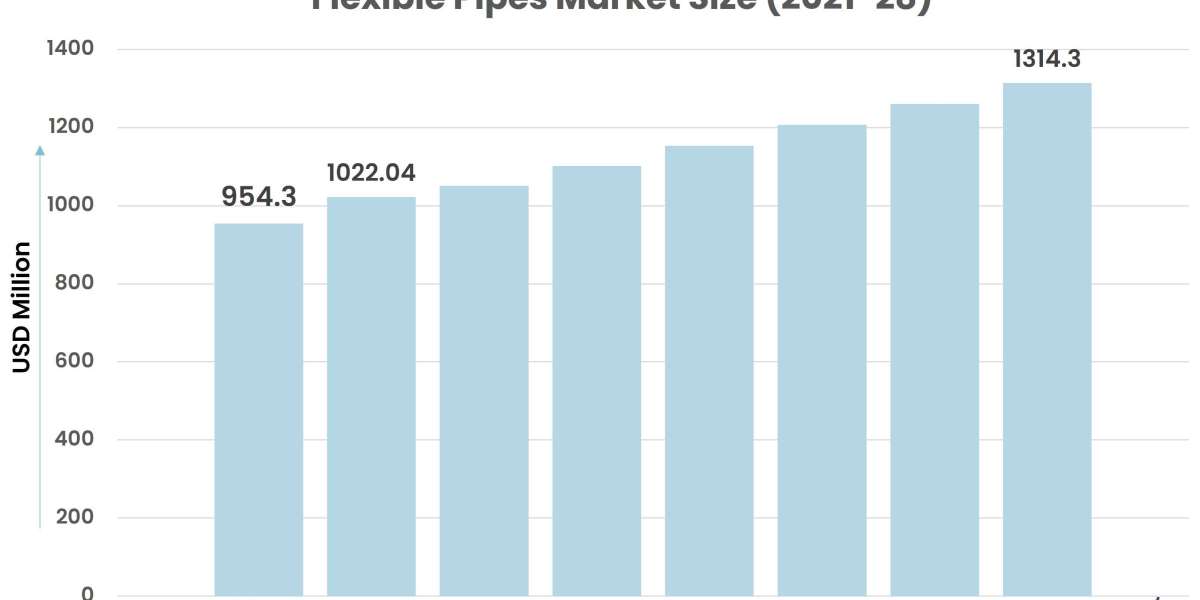According to Stratview Research, the flexible pipes market was valued at USD 954.3 million in 2021 and is likely to grow at a CAGR of 4.62% during 2022-2028 to reach USD 1314.3 million in 2028.
In the world of fluid transportation for offshore and subsea operations, the choice between flexible pipes and traditional rigid pipes represents a critical decision. Both options have their advantages and specific applications, but understanding the differences between them is crucial for optimizing performance, cost-effectiveness, and safety. In this article, we will explore the key differences, advantages, and applications of flexible pipes versus traditional rigid pipes.
Flexible Pipes: A Modern Solution
Flexible pipes, also known as flexible risers, are a relatively recent innovation in the field of subsea fluid transport. These pipes are typically composed of multiple layers, including an inner liner, pressure armor, tensile armor, and an outer protective layer. They are designed to be flexible, lightweight, and resistant to the harsh conditions of offshore environments.
Advantages of Flexible Pipes:
Adaptability: Flexible pipes are highly adaptable and can be custom-engineered to meet specific project requirements. They are suitable for various applications and environments, making them versatile in subsea operations.
Lightweight: Compared to traditional rigid pipes, flexible pipes are significantly lighter. Their lightweight nature simplifies transportation, installation, and maintenance, resulting in cost savings.
Flexibility: The key advantage of flexible pipes is their ability to bend and flex with changing conditions. They can handle movements caused by waves, currents, and the dynamic nature of subsea operations, reducing stress and the risk of damage.
High-Temperature Resistance: Flexible pipes are designed to withstand high temperatures, making them suitable for applications that involve the transport of hot fluids, such as oil and gas production.
Corrosion Resistance: They are resistant to corrosion, making them ideal for use in corrosive environments, including those involving saltwater.
Applications of Flexible Pipes:
Flexible pipes find applications in various industries and operations, including:
Offshore Oil and Gas Production: Flexible pipes are extensively used in offshore oil and gas fields, connecting subsea wells to floating production platforms. Their flexibility allows for easy installation and maintenance.
Deepwater Exploration: As the oil and gas industry moves into deeper waters, flexible pipes play a vital role in overcoming the challenges posed by extreme depths, pressures, and temperature variations.
Renewable Energy: Flexible pipes have applications in renewable energy, especially in offshore wind farms, where they transmit power from underwater turbines to the grid.
Traditional Rigid Pipes: A Legacy Solution
Traditional rigid pipes, typically made of materials like steel or concrete, have been used for decades in various applications, including onshore and offshore oil and gas operations. They are known for their structural strength and durability.
Advantages of Traditional Rigid Pipes:
Structural Strength: Rigid pipes excel in terms of structural strength, making them suitable for applications that require support and stability.
High-Pressure Environments: They can handle high-pressure fluids and are often used in deep-sea applications, such as drilling risers and wellheads.
Applications of Traditional Rigid Pipes:
Traditional rigid pipes are commonly used in the following applications:
Subsea Wellheads and Drilling Rigs: Rigid pipes are often used to transport drilling fluids and materials to and from drilling rigs and subsea wellheads.
High-Pressure Oil and Gas Transportation: They are employed in high-pressure oil and gas pipelines, especially in deepwater projects.
Choosing the Right Solution
The choice between flexible pipes and traditional rigid pipes depends on the specific needs of the project. While flexible pipes offer adaptability and ease of installation, rigid pipes provide structural strength and high-pressure capabilities. Often, a combination of both types is used in complex subsea operations to optimize performance and cost-effectiveness.
In conclusion, flexible pipes and traditional rigid pipes each have their advantages and applications in offshore and subsea operations. Understanding their differences and considering project-specific requirements is essential for making informed decisions that ensure the success and safety of subsea projects.







